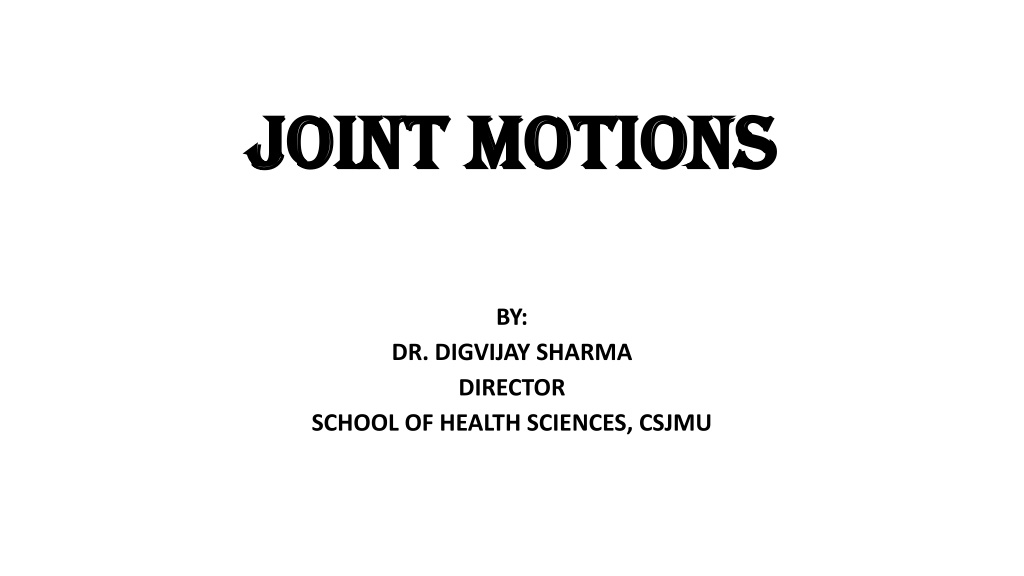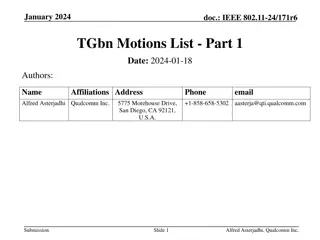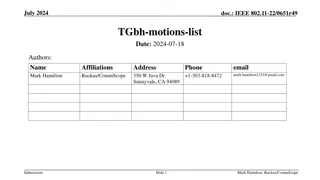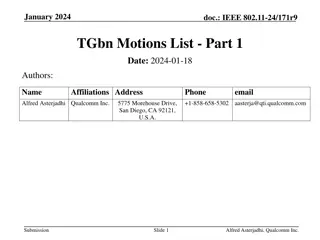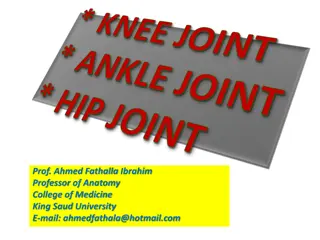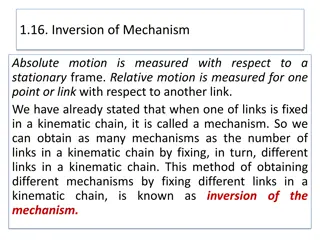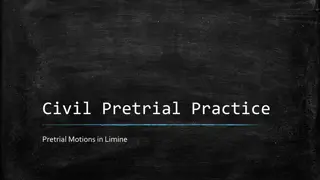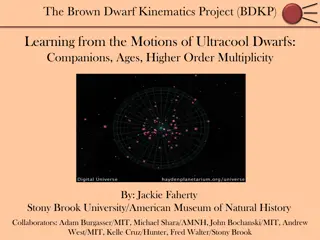Understanding Joint Motions and Osteokinematics in Human Anatomy
Joint motions involve rolling, sliding, and spinning of joint surfaces, with one surface serving as the fixed base for motion. Arthrokinematics explains the movement of joint surfaces, while osteokinematics focuses on bone movements within anatomical range of motion. The types of joint motions depend on the shape of articulating surfaces, categorized as ovoid or sellar joints. Limitations to joint motion can arise from soft tissues or bony structures. Understanding these concepts is crucial for assessing and optimizing human movement.
Download Presentation

Please find below an Image/Link to download the presentation.
The content on the website is provided AS IS for your information and personal use only. It may not be sold, licensed, or shared on other websites without obtaining consent from the author. Download presentation by click this link. If you encounter any issues during the download, it is possible that the publisher has removed the file from their server.
E N D
Presentation Transcript
JOINT MOTIONS JOINT MOTIONS BY: DR. DIGVIJAY SHARMA DIRECTOR SCHOOL OF HEALTH SCIENCES, CSJMU
arthrokinematics arthrokinematics The term is used to refer movement of joint surfaces Usually one of the joint is stable than other and serves as the base for the motion, whereas the other surface moves on this relatively fixed base Usually three types of movements occur at the joint surfaces: Rolling Sliding spinning
Rolling- it refers to the rolling of one joint surface on another, as a tire rolling on the road. Example: in the knee, the femoral condyles roll on the fixed tibial surface Sliding- it is a pure translatory motion refers to the gliding of one component over the other as a braked wheel skits. Example: in hand, the proximal phalanx slides over the fixed end of the metacarpal Spin- it refers to a pure rotatory motion. It refers to rotation of the movable component, as when a top spins. Example: at the elbow, head of the radius spins on the capitulum of the humerus during supination and pronation of the forearm The types of motion that occurs at a particular joint depends upon the shape of articular surface and most joint is either ovoid or sellar type. Ovoid joint- here one surface is concave while other is convex Sellar joint- here each articulating surface is both convex and concave
When a convex surface moves on a concave surface, sliding of convex surface occurs in opposite direction while in same direction in case when concave surface slides. Sliding is an essential component of joint motion because a bone cannot be expected to move without sliding of articular surface in appropriate direction. Joint motions are commonly produced as a result of combination of all three movements.
osteokinematics osteokinematics It refers to the movement of the bones rather than the movement of the articular surfaces The amount of motion possible at a joint is referred as anatomical or physiological range of motion because it is within the limit of anatomical structure of the joint. The extent of anatomic range is determined by several factors such as shape of joint surfaces, the joint capsule, ligaments, muscle bulk surrounding musculotendinous and bony structures In some joints there are limitations of range of motion by soft tissue for example knee joints other joints have both bony as well as soft tissue limitations such as humero-ulnar joint of elbow in extension.
A range of motion is considered pathological when joint motion either exceeds or fails to reach the normal anatomical limit When the range of motion exceeds the normal limit the joint is called hypermobile. It may be due to failure of either bony or soft tissue structures to limit the motion results in instability. When the range of motion is less than the normal limit the joint is called hypomobile. It may be due to bony or cartilaginous block, inability at the capsule, ligament or muscles to elongate sufficiently to allow a normal range of motion
